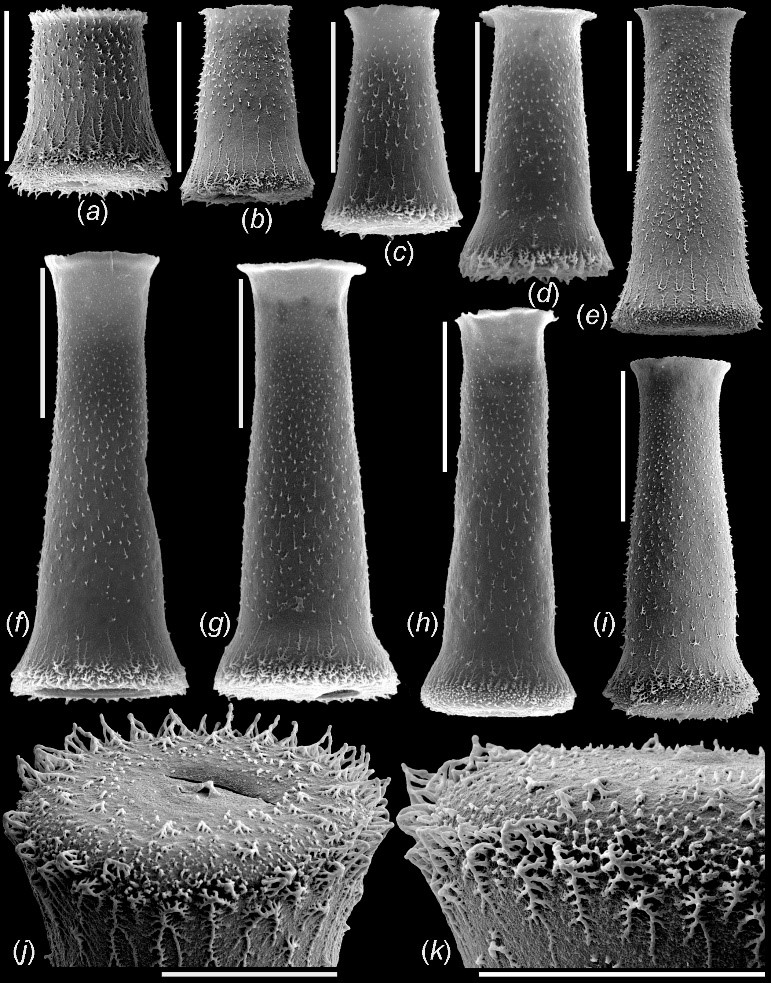Chitinozoans are organic-walled microfossils widely recorded in Ordovician to Devonian (about 400 million years ago) marine sediments and usually shaped like "bottles". Their biological affinity remains unknown, but most commonly, they are interpreted as eggs of marine metazoans.
Recently, researchers from China, Estonia and USA suggested that chitinozoans are more likely to be fossils of individual microorganisms rather than eggs. The results were published online in Proceedings of the Royal Society B on July 31, 2019.
Since their first description in the 1930s, multiple hypotheses have been put forward trying to explain their biological origin and ecology, including classification as protists, metazoans or egg capsules of metazoans.
With the first report of some cocoon-like preservation in Desmochitina, chitinozoans have almost exclusively been interpreted as eggs of unknown marine metazoans, possibly some wormlike animals, during the last three decades.
No further discussions related to their affinity have been advanced since then, even though the egg hypothesis makes no allowance for, nor does it explain, some of the morphological structures found in Chitinozoa.
However, in a recent study conducted by Dr. LIANG Yan from the Nanjing Institute of Geology and Palaeontology of the Chinese Academy of Sciences (NIGPAS) and her collaborators, the researchers re-evaluated the egg hypothesis from the perspective of morphological variation of chitinozoans. They conducted a detailed case study focusing on single highly variable species Hercochitina violana sp. nov. in order to allow for a more quantitative analysis.
The scientists compiled a dataset of measurements of 378 randomly selected species representing all 57 chitinozoan genera currently known, as well as a dataset of coefficients of variation (CV) in eggs from 45 extant aquatic metazoan species. For the first time, this allowed a reliable comparison of the magnitude of size variation between chitinozoans and undisputed eggs to further assess their possible analogy.
The results showed that the range of variation in most chitinozoans was much larger than that of eggs of extant marine invertebrates or the hitherto reported undisputed fossil eggs. The range and type of size variation shown in Hercochitina violana sp. nov. potentially indicated an ontogenetic series rather than an intraspecific variation.
Additionally, there is no analogue in extant metazoan eggs which have such complicated and delicate structures as developed in chitinozoans, not to mention the rapid evolutionary trend of ornamentations, which is also inconsistent with the prevailing egg hypothesis.
It is more plausible to argue that most chitinozoans, with the exception of the unique Desmochitina, represent independent organic-walled microorganisms rather than eggs of metazoans.

SEM images of Hercochitina violana sp. nov. showing the morphologic variation. (Image by NIGPAS)
Download:
